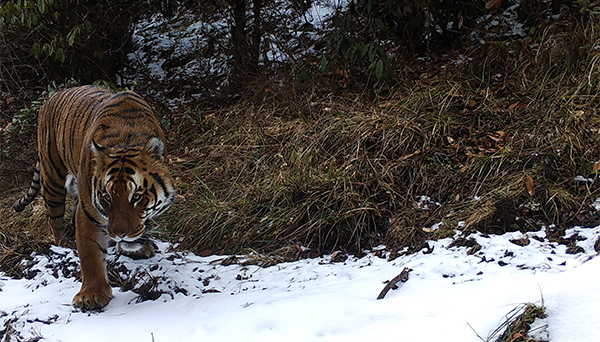
Going by the recently published research by a Bhutanese wildlife biologist, Phuntsho Thinley (PhD), Bhutan has 78 to 86 per cent of land suitable for tiger conservation and protection. But currently, the majority of the suitable tiger habitat remains unprotected. The research recommends there is a need to expand tiger conservation efforts beyond the protected areas, readjust or expand the protected area boundaries and biological corridors and step up anti-poaching patrols to ensure conservation and protection of tigers in the country.

From the many recommendations, the study proposed expanding boundaries of Phibsoo and Jomotshangkha Wildlife Sanctuaries to cover more tiger habitats. A new corridor is also essential to connect Bumdeling Wildlife Sanctuary with Sakteng Wildlife Sanctuary as tiger reappeared in Bumdeling Wildlife Sanctuary after an absence of 12 years.
 With an estimated tiger population of 103, Bhutan is acknowledged as a global tiger hotspot. But given the lack of enough tiger habitat, additional habitat protection and expansion is needed to ensure the long term survival of this iconic species.
With an estimated tiger population of 103, Bhutan is acknowledged as a global tiger hotspot. But given the lack of enough tiger habitat, additional habitat protection and expansion is needed to ensure the long term survival of this iconic species.
On the contrary, the head of Bhutan Tiger Centre says, it is not really necessary to expand the protected areas to conserve tigers.
“I do not think it is necessary to expand the protected areas wherever you find the tigers. One fine day we have tigers across the Bhutan border and can we expand our protected areas? We can’t. Realistically, it is not feasible but if we can ecologically, then there’s nothing like it. But it is not necessary that tigers have to be in the protected areas. In fact from our 2014 and 2015 nationwide tiger survey where we found out that there are as many tigers as in areas outside of the protected area. So tigers can do well and tigers are very adaptive and resilient species. They can survive and do well as long as we remove poaching and poisoning and other threats,” said Tshering Tempa (PhD), the Head for Bhutan Tiger Centre.
Global tiger population plummeted to less than 3,600 a decade ago from habitat loss, intense poaching and inadequate conservation efforts.
A 2018 study carried out by a research team from the Ugyen Wangchuck Institute for Conservation and Environmental Research (UWICER) revealed that areas with tigers experienced significantly fewer incidences of crop and livestock losses compared to those without tigers.
Sonam Pem









